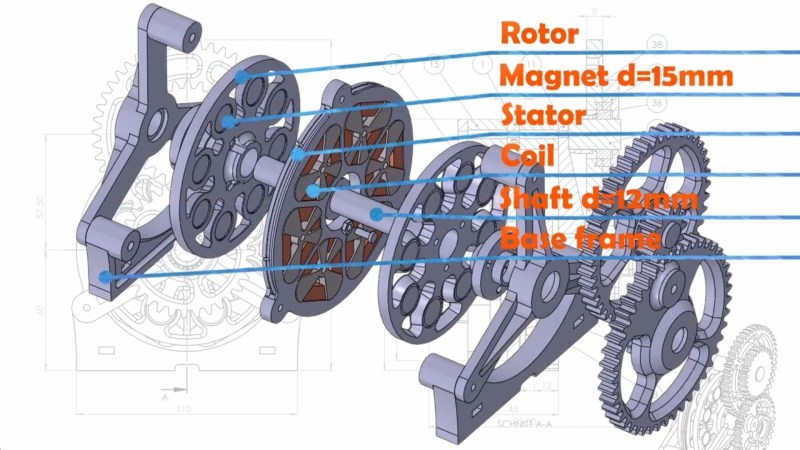Sometimes we build to innovate, and sometimes we build just to have the satisfaction of saying we made it ourselves. Yet there is another reason to construct something ourselves: To learn, just as [Fraens] has done with this 3D-printed generator. (Video, embedded below.)
[Fraens] starts off with a jig for winding the individual coils, but then the jig itself snaps into a the stator ring. The stator ring is sandwiched by two rotors which rotate on a brass shaft suspended by needle bearings. With the exception of the hardware, all the structural parts are 3d printed.
What really separates the generator build isn’t how it’s built, but rather how [Fraens] has put it to use as tool for learning and experimentation. By plotting input torque vs electrical output, [Fraens] is able to calculate efficiencies in multiple configurations, and has some interesting conclusions to share toward the end of the video. We appreciate how the documentation and analysis help iterate the design towards higher efficiency and will inform the next build.
With some more work, we can see this going straight into a Vertical Axis Wind Turbine or attached to a Pelton Wheel for an off-grid hydro-power setup. Thanks to [Shabab] for the great Tip!















i need this but not hand crank but clock system.
similar old decivat (not in shop)
electricity for hours not for minutes
Beautiful!
Now read up on Flux and permeability, then put some backing iron in there.
Later on in the video he did put some backing iron on it. :)
Yeah, saw that after commenting…. My bad
Excellent. More evidence supporting my old physics prof’s assertion that a few weeks in the lab can save *hours* of drudgery in the library.
Hi Ryan,
Thanks for this great article. The article has brought my little Youtube channel to many more viewers. There were ~400% more viewers through this article on my channel. This showed me what is possible when you are active on the right channels. Thank you very much.